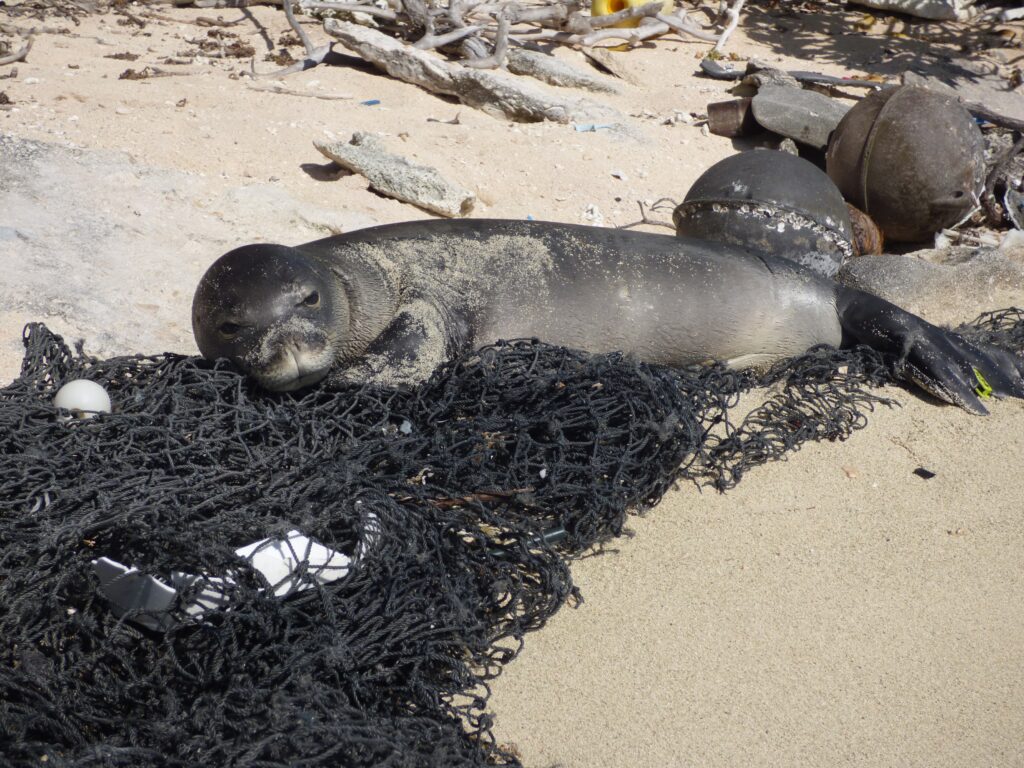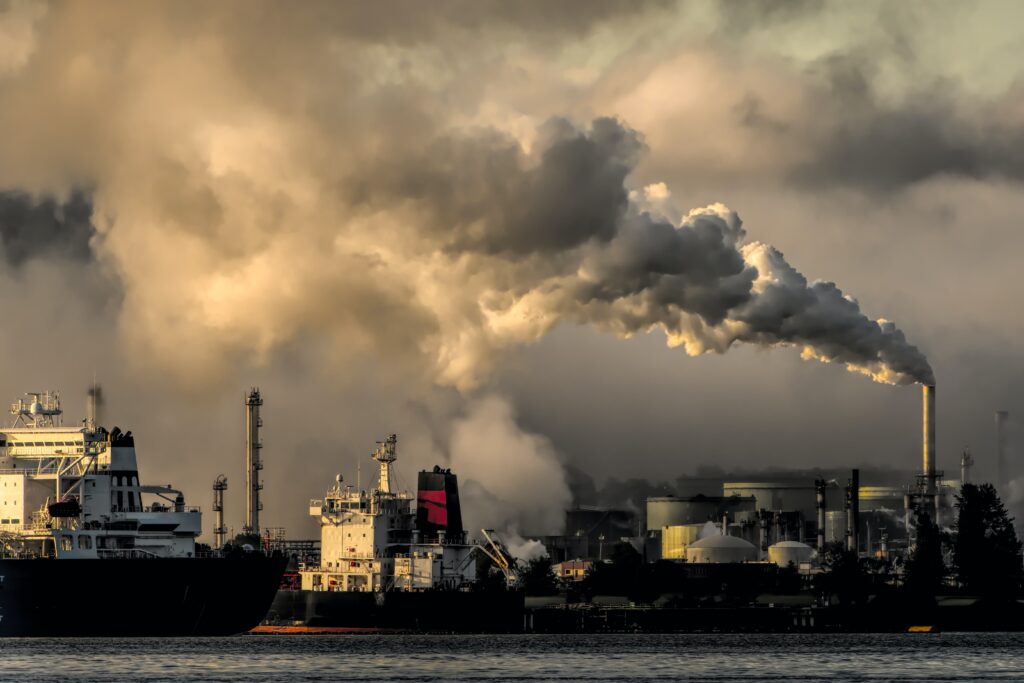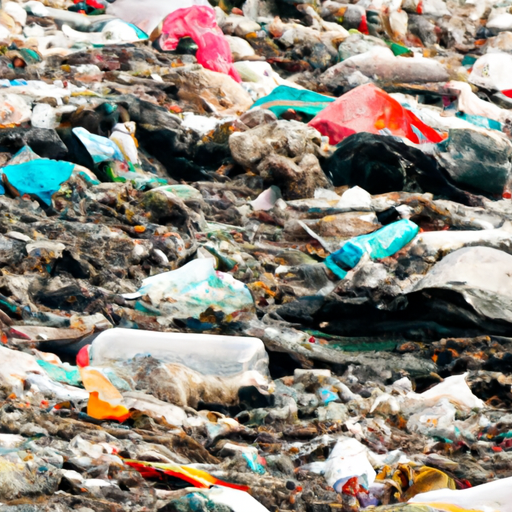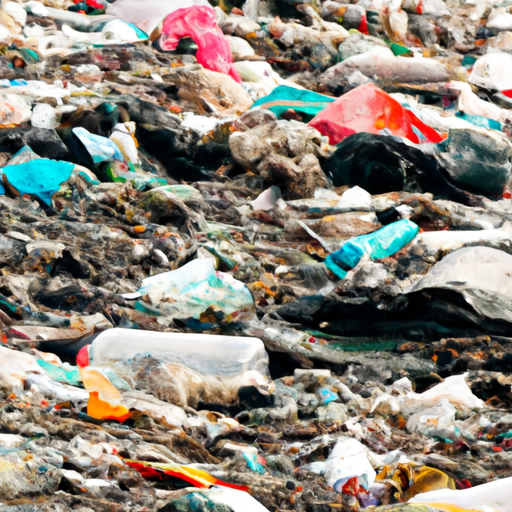You have probably heard about the importance of reducing single-use plastics, but have you ever wondered why should we reduce single-use plastics? Single-use plastics are items like plastic bags, straws, water bottles, and food packaging that are intended for one-time use and then discarded. However, these plastics have a significant impact on our environment and our health. They contribute to pollution in our oceans and landfills, harm wildlife, and take centuries to degrade. By reducing our consumption of single-use plastics, we can make a positive difference and work towards a more sustainable future.
Why Should We Reduce Single-Use Plastics: Environment Impact of Single-use Plastics
Plastic pollution in oceans
Single-use plastics contribute significantly to the issue of plastic pollution in our oceans. These plastics are often discarded after just one use, and they end up in our waterways, ultimately making their way to the ocean. The sheer quantity of these plastics is alarming, with an estimated 8 million metric tons of plastic finding its way into the ocean every year. This pollution has devastating consequences for marine life and ecosystems, with marine animals mistaking plastic for food or becoming entangled in plastic debris.
Harm to marine life
The harmful effects of single-use plastics on marine life cannot be understated. Marine animals mistake these plastics for food, causing them to consume toxic materials that can lead to malnutrition, internal injuries, and ultimately death. Additionally, plastic debris poses a significant entanglement risk for marine organisms, such as sea turtles, seals, and seabirds. The consequences of plastic pollution are not confined to individual animals; they can also disrupt entire ecosystems, leading to imbalances and a further decline in biodiversity.
Air pollution and greenhouse gas emissions
Single-use plastics also contribute to air pollution and greenhouse gas emissions. The production and incineration of these plastics release harmful pollutants and greenhouse gases into the atmosphere, contributing to climate change and negatively impacting air quality. The extraction of fossil fuels, primarily oil, required for the production of plastics further exacerbates these problems. It is essential to recognize the indirect environmental consequences of single-use plastics beyond their immediate impact on oceans and wildlife.
Why Should We Reduce Single-Use Plastics: Health Risks
Chemical leaching into food and drinks
One of the significant health risks associated with single-use plastics is the leaching of chemicals into food and drinks. Many single-use plastics, such as food containers and beverage bottles, are made from materials that contain harmful chemicals like bisphenols and phthalates. When these plastics come in contact with hot food or beverages, the chemicals can leach into the food or drink, posing a potential health risk when consumed. Studies have linked these chemicals to various health issues, including hormonal disruptions, reproductive problems, and certain types of cancer.
Microplastics in human bodies
Microplastics, small plastic particles less than 5mm in size, have become a pervasive environmental concern. These microplastics have been found in various sources, including the air we breathe, the food we eat, and even the water we drink. Research suggests that humans may be ingesting microplastics, which can accumulate in our bodies over time. The long-term health effects of microplastic ingestion are still uncertain, but studies have shown associations with inflammation, oxidative stress, and the potential for the particles to carry and release toxic chemicals.
Endocrine disruption
Single-use plastics have the potential to disrupt the endocrine system, which regulates hormones in our bodies. Chemicals found in plastics, such as phthalates and bisphenols, can mimic or interfere with our natural hormones, leading to endocrine disruption. This disruption can have adverse effects on reproductive health, brain development, immune function, and overall well-being. Pregnant women, infants, and children may be particularly vulnerable to the impacts of endocrine-disrupting chemicals found in single-use plastics. It is crucial to mitigate these risks to protect public health and ensure a sustainable future.
Check Out Our Top Eco Friendly Product Picks On Amazon Here
Why Should We Reduce Single-Use Plastics: Economic Costs
Clean-up and waste management expenses
The economic costs associated with single-use plastics are substantial. Governments and communities bear a significant financial burden in cleaning up plastic waste from beaches, rivers, and other natural environments. The costs of waste management, including recycling and landfilling, are also considerable. Single-use plastics often end up in landfills, where they take hundreds of years to break down, further adding to the long-term economic costs associated with waste management.
Loss of tourism revenue
Plastic pollution can have a detrimental impact on tourism, particularly in coastal areas. Beaches covered in plastic waste are unattractive to visitors and can drive away tourists, resulting in a loss of tourism revenue for local economies. Coastal activities such as swimming, snorkeling, and diving are popular tourist attractions, and the preservation of clean, pristine environments is essential for maintaining a thriving tourism industry. By reducing single-use plastics and preserving our natural landscapes, we can safeguard tourism revenue and support sustainable economic growth.
Impact on fishing and agriculture
The fishing and agricultural industries also suffer the consequences of single-use plastics. Plastic pollution in our oceans affects marine ecosystems, including fish populations. Fish can mistake plastic particles for food, leading to ingestion and subsequent bioaccumulation of toxins. This not only poses a risk to the health of fish but also impacts the sustainability of fisheries and the livelihoods of fishermen. In agriculture, plastic waste can contaminate soil and water, affecting crop growth and overall productivity. By reducing single-use plastics, we can help preserve the health and productivity of our oceans, fish populations, and agricultural lands.
Why Should We Reduce Single-Use Plastics: Climate Change
Carbon footprint of plastic production
The production of single-use plastics contributes to greenhouse gas emissions, primarily through the extraction and refining of fossil fuels, such as oil and natural gas. These fuels are used as feedstocks in the production of plastics. The extraction process and subsequent refining require significant energy inputs, releasing carbon dioxide and other greenhouse gases into the atmosphere. Additionally, the production of plastics involves chemical reactions and high-temperature processes that contribute to emissions. By reducing our consumption of single-use plastics, we can help mitigate the carbon footprint associated with plastic production.
Contribution to oil consumption
Single-use plastics are made predominantly from petroleum-based materials, meaning their production is reliant on oil extraction. The extraction, transportation, and refining of oil for plastic production consume vast amounts of energy and contribute to the overall demand for fossil fuels. By reducing our reliance on single-use plastics and transitioning to more sustainable alternatives, we can drive a decrease in oil consumption, which in turn helps address climate change and reduce our dependence on non-renewable resources.
Disruption of natural carbon sequestration
Healthy ecosystems play a vital role in naturally sequestering carbon dioxide, a major greenhouse gas contributing to climate change. However, single-use plastics and their associated pollution pose a threat to these ecosystems. For example, plastic waste in oceans can harm marine plants, such as seagrass and algae, which play a significant role in carbon sequestration. Additionally, plastic pollution can lead to degradation of ecosystems like forests, which are crucial for sequestering carbon and combating climate change. By reducing single-use plastics and supporting ecosystem preservation, we can contribute to natural carbon sequestration efforts.

Alternatives to Single-use Plastics
Reusable alternatives
One effective solution to mitigate the environmental impact of single-use plastics is to opt for reusable alternatives. By investing in reusable water bottles, shopping bags, coffee cups, and food containers, you can significantly reduce your reliance on single-use plastics. These durable alternatives are often made from materials such as glass, stainless steel, or fabric, which can be washed and reused for an extended period. Choosing reusable options not only reduces waste but also saves money in the long run.
Biodegradable and compostable options
Biodegradable and compostable alternatives to single-use plastics are becoming increasingly available. These materials are designed to break down naturally in the environment, either through biodegradation or composting processes. Biodegradable plastics can degrade over time, while compostable materials can break down in specific composting conditions. These alternatives offer a more sustainable option for single-use items like cutlery, food packaging, and disposable cups. However, it is essential to dispose of these items properly in designated facilities to ensure effective degradation or composting.
Encouraging behavior change
In addition to promoting reusable and biodegradable alternatives, fostering behavior change is crucial in reducing single-use plastic consumption. Educating individuals about the environmental impacts of single-use plastics and providing practical tips for reducing their use can encourage people to make sustainable choices. Encouraging the use of refillable water stations, implementing plastic bag bans, and promoting responsible waste management practices are effective ways to promote behavior change and create a shift towards a plastic-free society.
Why Should We Reduce Single-Use Plastics: Impact on Wildlife and Ecosystems
Threats to endangered species
Single-use plastics pose significant threats to many endangered species. Marine creatures like sea turtles, whales, and seabirds are particularly vulnerable to plastic pollution. They can mistake plastic debris for food, which may lead to ingestion, internal injuries, or suffocation. The entanglement risk posed by plastic waste further endangers these species. On land, terrestrial animals can also be impacted by plastic pollution, with entanglement and ingestion posing risks to mammals, reptiles, and birds. Protecting endangered species necessitates addressing the issue of single-use plastics and striving for a cleaner and safer environment.
Damage to habitats
The damaging effects of single-use plastics extend beyond the harm caused to individual animals. Plastic pollution can affect entire habitats, leading to irreversible damage. This pollution disrupts natural ecosystems that provide essential services, such as food production, water filtration, and climate regulation. Habitats like coral reefs, mangroves, and forests, which support a diverse range of species, are particularly vulnerable. By reducing single-use plastics, we can help protect these habitats and ensure their preservation for future generations.
Loss of biodiversity
Plastic pollution contributes to the loss of biodiversity, which is crucial for maintaining the environmental balance and resilience of ecosystems. As wildlife populations decline due to plastic pollution, ecosystems can become imbalanced, leading to a cascade effect on other species and natural processes. Biodiversity loss not only affects the stability of ecosystems but also compromises the services they provide, such as pollination, pest control, and soil fertility. By addressing the issue of single-use plastics, we can help protect biodiversity and ensure the long-term sustainability of our planet.

Why Should We Reduce Single-Use Plastics: Effects on Water Resources
Water contamination
Single-use plastics can contaminate water resources, posing risks to human health and the environment. Disposable plastic items, such as bottles, cups, and packaging, can break down into smaller pieces known as microplastics. These microplastics can enter water sources through runoff, leaching from landfills, or even through sewage systems. Once in waterways, they can accumulate and contaminate drinking water sources. The presence of microplastics in water systems raises concerns about the potential ingestion of these particles and the associated health risks.
Disruption of water ecosystems
Plastic pollution also disrupts the balance of water ecosystems. Microplastics can impact aquatic organisms by interfering with their feeding, respiration, and reproduction. The presence of plastic debris can alter water quality, block sunlight from reaching underwater plants and organisms, and introduce toxic chemicals into aquatic environments. These disruptions can have far-reaching consequences, affecting the entire food chain and compromising the overall health and functioning of water ecosystems.
Reduced access to clean drinking water
The contamination of water sources due to single-use plastics can have severe implications for access to clean drinking water. As more microplastics infiltrate water systems, it becomes increasingly challenging to ensure that drinking water is free from these pollutants. In regions where access to clean drinking water is already limited, the presence of microplastics and other plastic pollutants exacerbates the situation. By reducing single-use plastics and implementing proper waste management practices, we can help protect water resources and ensure access to clean, safe drinking water for all.
Reducing Single-use Plastics for a Sustainable Future
Government regulations and policies
Government regulations and policies play a crucial role in reducing single-use plastics. Many countries have implemented bans or levies on specific plastic items, such as single-use bags or straws. These measures aim to reduce plastic consumption and encourage the use of more sustainable alternatives. Additionally, governments can promote extended producer responsibility, requiring companies to take responsibility for the entire lifecycle of their products, including the proper disposal or recycling of plastic waste. Strong policy frameworks and enforcement ensure that reducing single-use plastics becomes a collective effort and contribute to a sustainable future.
Corporate responsibility and product design
Corporations have a significant role to play in reducing single-use plastics. By reevaluating product design and packaging choices, companies can minimize the reliance on disposable plastics. Embracing sustainable packaging alternatives, promoting refillable or reusable options, and investing in eco-friendly materials can make a significant impact. Corporate responsibility extends beyond product design, encompassing responsible waste management, supporting recycling initiatives, and educating consumers about the importance of reducing single-use plastics. By adopting sustainable practices, businesses can drive positive change and help create a more sustainable future.
Individual actions and education
Individual actions, combined with education and awareness, are vital in reducing single-use plastics. By making conscious choices to reduce plastic consumption in our daily lives, we can contribute to a significant reduction in plastic waste. Simple actions such as carrying reusable shopping bags, using refillable water bottles, and opting for products with minimal plastic packaging can make a difference. Education and awareness campaigns can help individuals understand the environmental consequences of single-use plastics and provide practical tips for making sustainable choices. By empowering individuals and promoting behavior change, we can create a collective effort towards a plastic-free and sustainable future.

Success Stories and Positive Impact
Cities and countries leading the way
Several cities and countries around the world have taken significant steps in reducing single-use plastics and have seen positive impacts. For example, countries like Rwanda and Kenya implemented bans on plastic bags, leading to a significant reduction in plastic pollution and a shift towards more sustainable alternatives. Cities like San Francisco, Seattle, and Montreal have implemented plastic straw bans, encouraging the use of biodegradable or reusable alternatives. These success stories demonstrate that with strong leadership, policy commitment, and community involvement, it is possible to reduce single-use plastics and create a cleaner, healthier environment.
Reduction in plastic waste and pollution
Efforts to reduce single-use plastics have led to tangible results, with notable reductions in plastic waste and pollution. By implementing strategies such as plastic bag bans and promoting reusable alternatives, countries and communities worldwide have witnessed a decrease in plastic waste entering landfills and waterways. Additionally, waste management systems have improved, with enhanced recycling programs and increased public participation. These initiatives have not only reduced plastic pollution but have also contributed to overall waste reduction and improved environmental health.
Health and environmental improvements
Reducing single-use plastics has resulted in positive health and environmental outcomes. By minimizing exposure to harmful chemicals found in plastics, individuals can protect their health and reduce the risk of adverse health effects associated with plastic consumption. Clean beaches and waterways contribute to improved aesthetics and the well-being of communities, enhancing opportunities for recreational activities and tourism. The conservation of natural habitats and ecosystems also ensures the protection of valuable resources and helps maintain the balance of our planet’s ecosystems.
Challenges and Obstacles in Reducing Single-use Plastics
Resistance from plastic industry
The plastic industry has historically resisted efforts to reduce single-use plastics. These industries often prioritize profit margins over environmental concerns, pushing back against regulations or alternative solutions. The opposition can stem from concerns about potential revenue loss, job displacement, or the belief that plastic recycling is an adequate solution. Overcoming resistance from the plastic industry requires increased awareness, public pressure, and collaboration between government, businesses, and citizens to drive necessary changes.
Lack of consumer awareness
Limited consumer awareness of the environmental impact of single-use plastics remains a significant obstacle. Many individuals continue to use these plastics without fully understanding the consequences for ecosystems, wildlife, and human health. Widespread education and awareness campaigns are necessary to inform the public about the environmental ramifications of single-use plastics and provide practical alternatives. Empowering consumers with knowledge and practical solutions can drive behavior change and create momentum towards reducing plastic waste.
Infrastructure limitations
Infrastructure limitations pose challenges to the reduction of single-use plastics. Adequate waste management systems, including recycling facilities and composting infrastructure, are necessary for effective plastic waste reduction. However, many communities, especially in developing countries, lack the resources and infrastructure to handle plastic waste effectively. Addressing these limitations requires investment in waste management infrastructure, technology, and education to ensure the proper disposal and recycling of plastics. It is essential to address these infrastructure gaps to enable a more comprehensive and sustainable approach to reducing single-use plastics.
Conclusion: The Imperative to Reduce Single-Use Plastics
As we reach the end of our discussion, the question “Why should we reduce single-use plastics?” takes on renewed urgency. It’s clear that the issue is far more than an environmental slogan; it’s a call to action that has profound implications for our ecosystems, health, and future generations.
Environmental Toll
First and foremost, the environmental degradation caused by single-use plastics is staggering. These plastics often end up in our oceans, forests, and urban spaces, causing harm to wildlife and natural ecosystems. They take hundreds of years to decompose, leading to long-lasting environmental damage that far outweighs their brief utility. The scale of this impact underscores why we should reduce single-use plastics as a matter of priority.
Health Implications
Beyond environmental concerns, our extensive reliance on single-use plastics poses significant health risks. Chemicals like BPA found in some plastic items can leach into food and water, thereby entering our bodies and potentially disrupting hormonal balances. Furthermore, microplastics—tiny particles that break off from larger plastic items—have been found in everything from tap water to human tissues. These are unsettling reminders that we should not take the question of why we should reduce single-use plastics lightly.
Economic and Social Factors
Economically, the unsustainable use of single-use plastics also places a burden on waste management systems and recycling facilities. In many cases, the cost of properly disposing of or recycling these items is far higher than the production cost, creating an economic imbalance that is unsustainable in the long term. Society pays the hidden costs, often without realizing it. Reducing single-use plastics could alleviate this economic strain and pave the way for more sustainable, cost-effective solutions.
The Road to Sustainable Alternatives
Fortunately, alternatives to single-use plastics are increasingly available and effective. From reusable bags to compostable utensils, there are options that can replace single-use plastics in almost every aspect of daily life. Technological advancements and consumer demand are driving the creation of even more sustainable alternatives, making the transition away from single-use plastics not just a viable option, but an increasingly convenient one.
A Collective Responsibility
In summary, the answer to “Why should we reduce single-use plastics?” lies in the interconnectedness of environmental integrity, human health, and economic sustainability. The impact of these plastics reverberates through every aspect of our lives, making it a collective responsibility to curb their use. The move away from single-use plastics requires an all-hands-on-deck approach—from individual choices to legislative measures—to create a sustainable path forward for both the planet and its inhabitants.
By acting now, we stand a chance of curbing this pervasive issue, forging a future that doesn’t rely on disposable plastics for short-term convenience at the cost of long-term harm.




